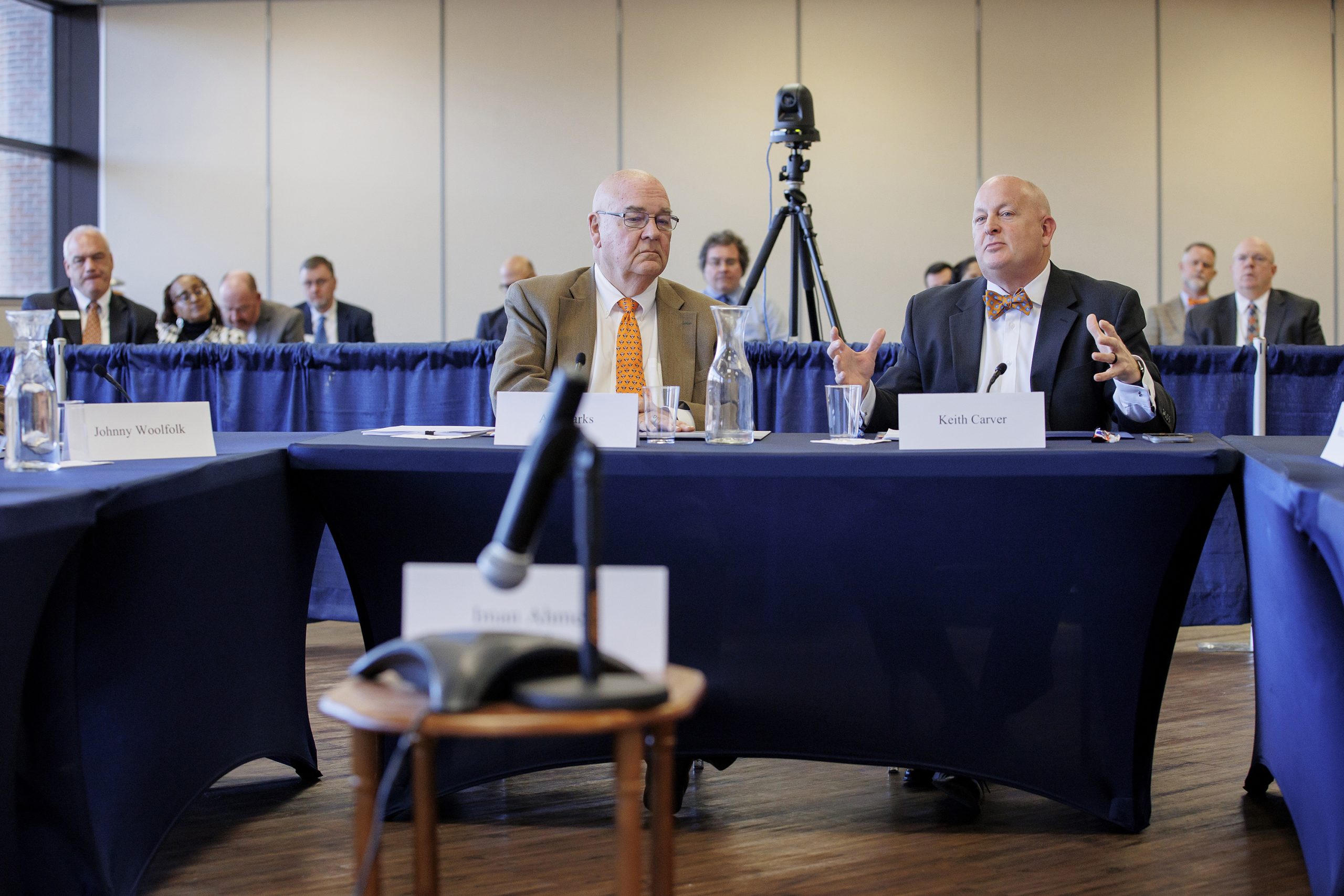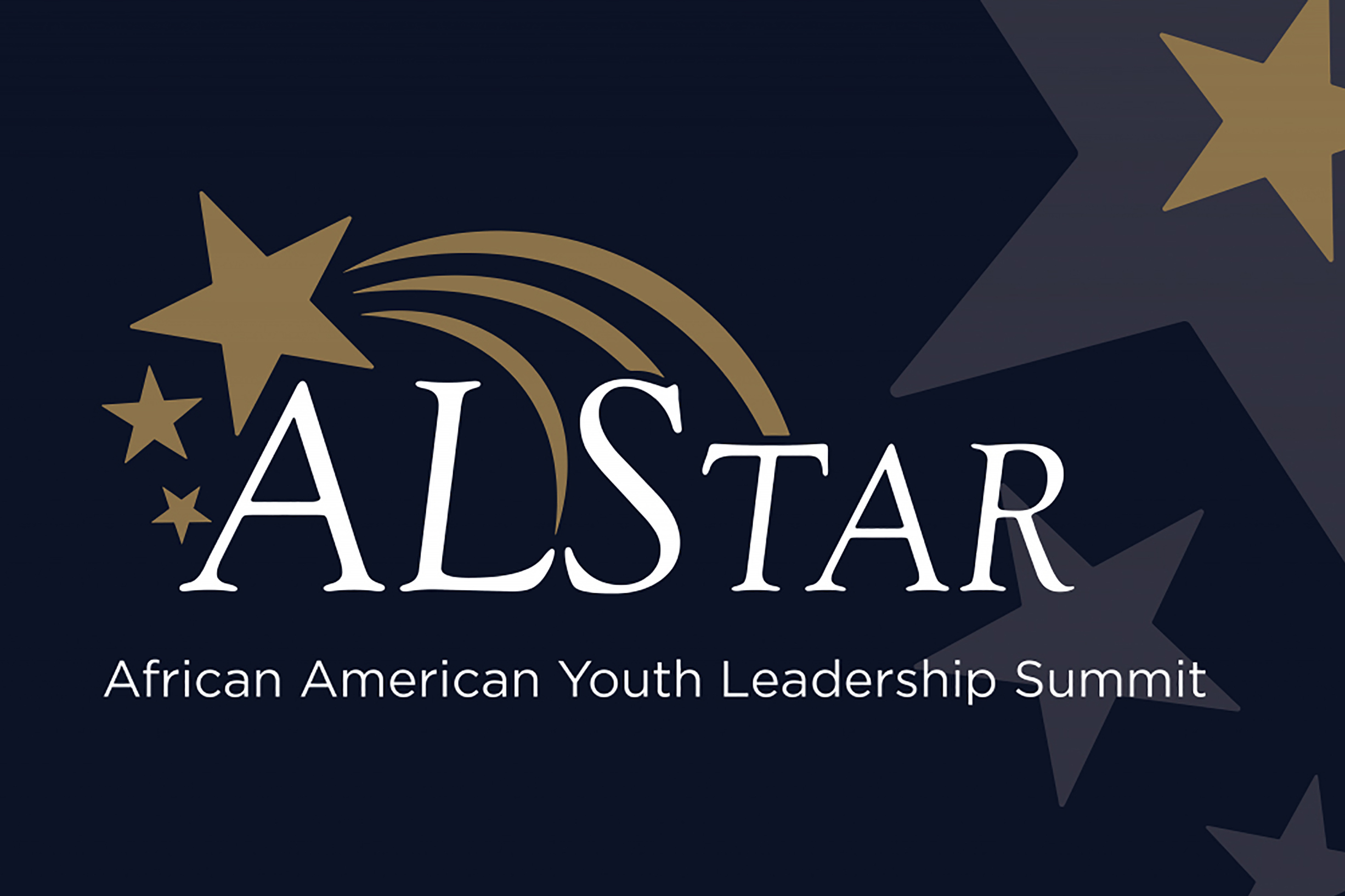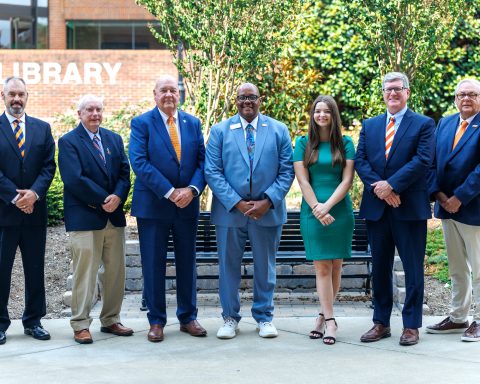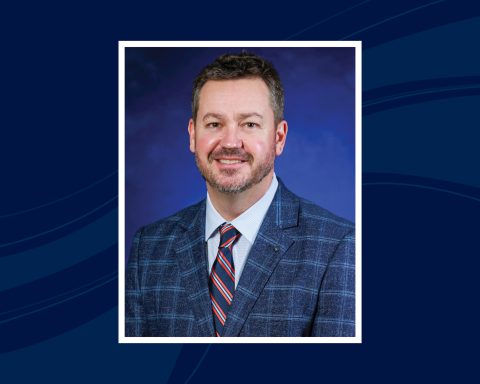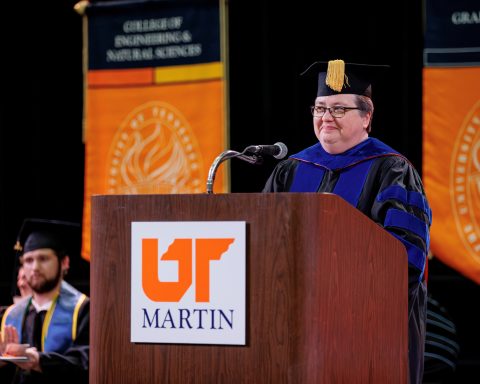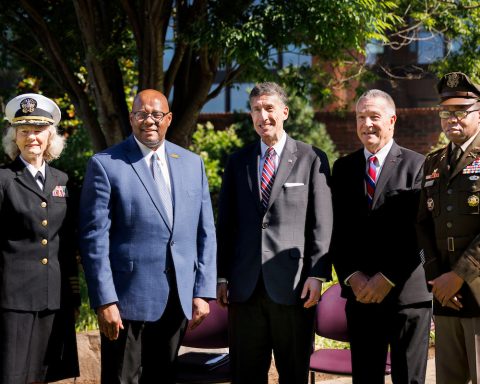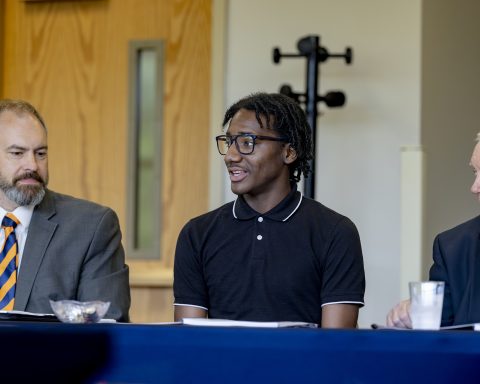Story by: Bud Grimes
Intercollegiate athletics, transfer students and student retention were the topics for updates presented to the University of Tennessee at Martin Advisory Board during its winter meeting Friday, Jan. 20, in the Ed and Carolyn Boling University Center. The advisory board meets three times annually and advises the university’s chancellor regarding operations and budget matters. All meetings are open to the public, and all meeting are livestreamed and archived for later viewing.
Kurt McGuffin, vice chancellor and director of athletics, opened with a review of Skyhawk athletics in 2022. He summarized the program’s past year based on what he called “the three Cs”: how the program performed competitively, in the classroom and in the community. “(I’m) very proud of where we’ve been in the last five or six years,” he said. “Six of our sports have won a combined 10 conference championships, and last year we set a record for the university in having four different teams win OVC championships.” The program finished the highest ever in the Ohio Valley Conference Commissioner’s Cup that measures competition success among member universities.
McGuffin reported that the university has almost 500 student athletes, and student-athlete numbers and academic success have both increased since he became athletics director in 2017. He credited improved academic achievement in part to increasing the number of academic advisers from one person to more than three, which has improved classroom performance for at-risk athletes.
In recapping community involvement, McGuffin said that all athletes are required to complete 12 hours of community service, which included volunteer work at the tornado cleanup in Dresden and We Care in Martin. An upcoming “change drive” by student athletes in February will collect spare change to be donated to Special Olympics. McGuffin also covered athletics fundraising, NCAA financial aid guidelines, the status of the OVC and national issues such as the student-athlete transfer portal.
“Five thousand football kids are in the transfer portal,” he said. “Over 25% of all college men’s basketball players entered the transfer portal last year, so it’s here.” The transfer portal has affected Skyhawk athletics in positive and negative ways, but the portal coupled with Name, Image, Likeness or NIL agreements can help the athletes, McGuffin said, so the university must find ways to compete in this new reality for college sports.
Dr. Philip Acree Cavalier, provost and senior vice chancellor for academic affairs, followed the athletics report with information about transfer students to the university. Transfer athletes are part of transfer-student enrollment, and he acknowledged McGuffin for his approach to athletics and academics at UT Martin, describing him as “forward-thinking as any athletics director I’ve worked with,” Cavalier said. “I think he cares deeply about winning – there’s no question about that – but he cares very much about the academic side.”
Cavalier explained that students coming to UT Martin with credit from other colleges and universities are considered transfer students while those arriving with dual-enrollment credits earned while still attending high school are first-time, full-time enrollees. “Right now, roughly we have about 30% of our total new-enrolled students – they are transfers, so it’s important that we continue to grow that (population),” he said, noting that work remained to be done with first-time, first-year enrollments. However, he said that transfers are essential to strong enrollment, plus these students are closer to graduation, “and graduation helps us with formula funding, and it’s a good thing to get students in this region to complete a degree – a four-year degree.”
Transfer-student needs can differ from those of other students in navigating college, and Cavalier noted the work of Dr. Jamie Mantooth, the university’s executive director of enrollment services and student engagement, who began annual Transfer Boot Camps starting in 2019 for transfer students. These students are invited for a special orientation weekend before fall classes begin to meet people, learn about the university’s history and participate in team-building experiences that help to build a transfer cohort. One challenge noted by Cavalier will be to evolve this experience so that possibly more can participate in the camps within available funding for these special activities.
Dr. Brad Baumgardner, director of retention, completed the reports and discussed his area’s work with student progression, retention and persistence. He talked about HIPs (high impact practices) such as supplemental instruction and one-on-one meetings with students to improve success and address barriers to students succeeding in college. Keeping students informed through outreach is a key to retaining students, and one focus is assistance at registration time, which includes planned communications with students about the registration process.
“We’ve begun to implement registration campaigns to raise awareness and encourage students to register early so that we can start to eliminate barriers, help them over hurdles,” he said. Another retention initiative is a lottery scholarship retention campaign.
“The Hope Lottery Scholarship is wonderful for students,” Baumgardner said. “It’s checked at 24-hour increments. One of the biggest challenges is that students don’t always know exactly what they have to do to maintain eligibility from a grade-point-average perspective.” This initiative involves reviewing grade-point data and contacting students who are in danger of losing this important scholarship.
Baumgardner reminded the board members that student retention goes beyond the numbers. “I always like to make sure that everyone understands that if we’re talking about one percentage point for our student population, that’s 46 students,” he said. “(That’s) forty-six students who have the opportunity to stay here, gain an education, get a toehold in the middle class, and take advantage of all the opportunities that this university offers.
“So, yes, it’s not about percentage points on a piece of paper. It’s about students.”
Chancellor Keith Carver closed with a brief report that included a reminder about the 23rd Civil Rights Conference that runs the throughout February at the main campus. Speakers and other conference information can be found at www.utm.edu.
Art Sparks, of Union City, chairs the seven-member board that includes, Dr. Anderson Starling, faculty representative; Iman Ahmed, Cordova, student representative; Hal Bynum, Sharon; Monice Hagler, Memphis; Julia Wells, Jackson; and Johnny Woolfolk, Madison County.
Archived meeting agendas, minutes and meeting webcasts, including the Jan. 22 meeting webcast, are found at www.utm.edu/advisoryboard. Select the “Agenda and Meeting Materials” menu link for archived content. Call the UT Martin Office of University Relations at 731-881-7615 for additional assistance or information.
###
Photo ID: UT Martin Advisory Board chair Art Sparks and Dr. Keith Carver, UT Martin chancellor, lead the discussion during the board’s winter meeting Friday, Jan. 20, in the Ed and Carolyn Boling University Center.

